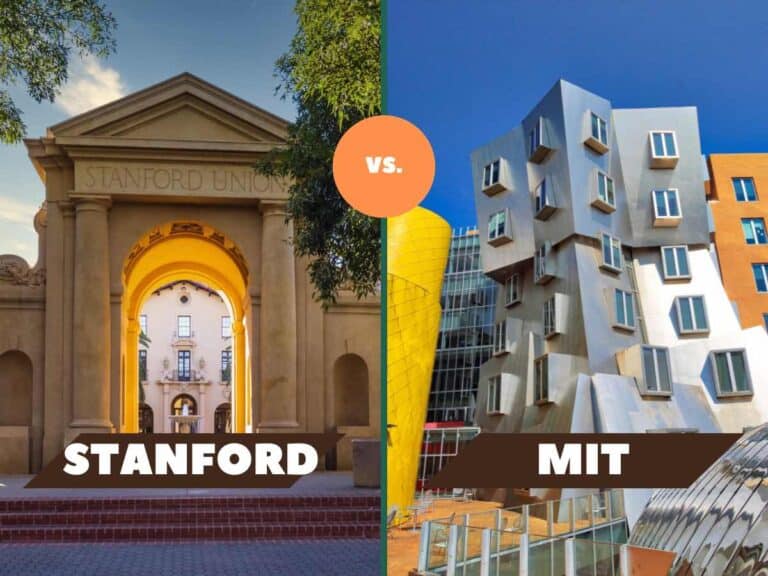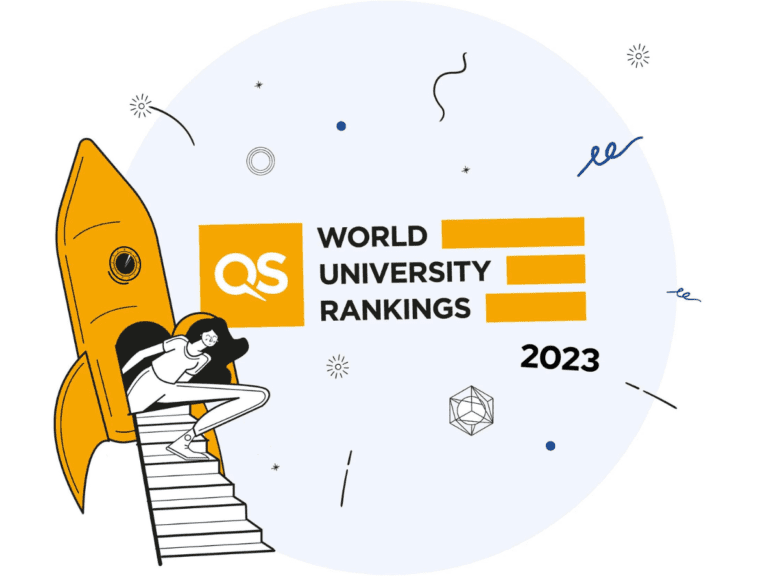Comparison of College Factual with Other College Rankings
The name makes it appear as though College Factual is concerned with dishing out rankings based on nothing but hard data, which can help keep subjectivity and biases at bay.
But is it something that you can rely on just like some of the most trusted college rankers out there or is it one of those that you should forget?
In terms of the methodology used alone, College Factual exhibits reliability. It scores higher education institutions based on factors considered by many students in the college selection process. To keep its annual listings free from contamination, College Factual uses data obtained from credible third-party sources.
College Factual is run by Media Factual, which is based in Troy, New York.
The company’s goal is to simplify the college selection process for all parties concerned — students, parents and high school guidance counselors — by coming up with data-driven rankings.
It takes pride in the fact that it simplifies everything by focusing only on the most important matters, including cost, value and personal fit.
So, is College Factual legit? And should you use it as a guide in building a college list? Read on.
Just about everything you have to know about this college ranking site will be talked about below, including the methodology it employs and how it fares against other more popular rankers.

Ranking Methodology Used by College Factual
College Factual employs a methodology consisting of 6 main indicators, whose weights range from high, medium to low. In designing the ranking system used, simplification by considering only the most essential is the key. College Factual uses open government data in scoring institutions.
It’s not uncommon for some college ranking sites to conduct polls and surveys in ranking schools.
Well, College Factual is not one of them. As a matter of fact, it states that, at the root of its ranking philosophy, is objectivity achieved by using hard data instead of subjective opinions of respondents.
Needless to say, in order to avoid biases and contamination of ranking results, the site refrains from using info coming from colleges and universities and their attendees.
Instead, it turns to the following government agencies that provide figures available for everyone to access:
US Bureau of Labor Statistics (BLS)
College Factual depends on 2 datasets published by the BLS.
One of them is Wage Data by Area and Occupation for job projections nationwide and by state and metropolitan area for more than 800 occupations.
The other one is the Occupation Employment Statistics (OES) for pieces of information such as hourly and annual wages, number of employed individuals and industry.
US Department of Labor (DOL)
Numerous other occupation information College Factual requires in ranking schools come from the DOL’s O*NET Database, which contains a set of variables that describe work and employee characteristics.
Some of them include job titles, work activities, educational requirements and technology and skills utilized.
For student exchange program matters, it uses data from Immigration and Customs Enforcement (ICE).
US Department of Education (DOE)
One of the datasets published by the DOE College Factual utilizes is the Integrated Postsecondary Education Data System (IPEDS), which publishes more than 50 different datasets.
Data the college ranking site uses specifically include admissions and enrollment numbers, tuition and fees, financial aid, graduation rates and institutional characteristics.
Both the College Scorecard and Database of Accredited Postsecondary Institutions and Programs (DAPIP) by the DOE are used, too, by College Factual as data sources.
And now, let’s take a look at the different factors included in College Factual’s ranking methodology:
Accreditation score
Whether it’s a traditional or online institution you wish to apply to, one of the most important steps to take beforehand is to determine whether or not it’s fully and successfully accredited by an agency recognized by the DOE and the Council of Higher Education Accreditation (CHEA).
Otherwise, you could end up bearing a bachelor’s degree many employers and graduate schools wouldn’t recognize.
College Factual knows this so well, which is why it gives the ranking factor accreditation score a high weight. The measure puts emphasis on a school’s regional or national accreditation as well as programmatic ones.
Employment score
College Factual looks into just how successful the alumni members of the colleges being ranked are.
With a high weighting, the ranking factor employment score determines the employability of graduates by checking out both employment rate and annual earnings.
According to data provided by the National Center for Education Statistics (NCES), the employment rate for people with a bachelor’s degree was 86%.
Naturally, the more alumni members of a school are employed, the higher the employment score College factual gives the degree-granting institution.
Demand score
Not too many college ranking sites out there consider the number of applications schools get in the ranking process. Well, its inclusion of how in-demand a college is that makes College Factual different from the pack.
Something the college ranker checks when giving a school a demand score is the matriculation rate or what some institutions refer to as the yield rate.
It goes without saying that the more students who get an acceptance letter actually accept the offer and enroll, the higher the score the college or university gets.
The ranking factor demand score in College Factual’s methodology has a medium weight.
Education score
Simply put, the ranking factor education score is what other college ranking sites refer to as academics or academic quality. More often than not, it’s the indicator with the most impact.
College Factual, however, considers it worthy of having a medium weight only.
There are many things that the college ranker looks into when determining a school’s education score.
To determine the quality of its academic programs, College Factual takes into account important data points such as educational investments, student-to-faculty ratio, faculty salary, educational investments and graduation rate.

Debt score
Based on the information provided by the Education Data Initiative, the average amount of educational debt of bachelor’s degree holders in the US is $34,100.
Attending a public 4-year institution doesn’t spare degree-seeking students from winding up with debt — the same source says that 65% of public college graduates have student loan debt.
Naturally, college-bound teens who are on a budget should look for institutions where they can keep the amount of money they will have to repay after graduation low. To help them in this quest, College Factual gives colleges debt scores.
Having a low weighting, the said ranking factor considers student loan debt, default rate and repayment rate.
Peer score
What makes taking a college tour beforehand vital is that it allows students gearing up for postsecondary education to have an idea of whether or not they can feel like they belong on campus.
College Factual knows the importance of this matter, which is why its methodology includes the indicator peer score, which has a low weighting.
Diversity on campus can have a favorable impact on the academic performance of college students. And it’s exactly due to this why College Factual ranks colleges, too, based on how diverse their student body is.
Also taken into account under the ranking factor peer score are the standardized test scores of admits.
And this brings us to this pressing question: is College Factual ranking reliable?
Since College Factual skips polling and surveying and goes straight to hard data coming from various government agencies, subjective and biased results are avoided. This guarantees high schoolers who are in the process of building a college list that the rankings before them are less likely to be contaminated.
However, although the college ranking site makes it clear the factors included in its methodology, it doesn’t specify exactly how much weighting each one — it just indicates that they are high, medium or low.
College Factual prioritizes institutions conferring accredited degrees that many employers look for.
To have a much better idea of how the methodology used by College Factual looks like when applied, check out the top 20 of the site’s Best Colleges in the United States ranking:
| RANKING | COLLEGE |
|---|---|
| #1 | Massachusetts Institute of Technology |
| #2 | Stanford University |
| #3 | Duke University |
| #4 | University of Pennsylvania |
| #5 | Northwestern University |
| #6 | Claremont McKenna College |
| #7 | University of Chicago |
| #8 | Carnegie Mellon University |
| #9 | Johns Hopkins University |
| #10 | Princeton University |
| #11 | Brown University |
| #12 | Harvard University |
| #13 | Cornell University |
| #14 | Columbia University |
| #15 | Yale University |
| #16 | University of Notre Dame |
| #17 | University of California – Berkeley |
| #18 | University of Southern California |
| #19 | Georgetown University |
| #20 | Bowdoin College |
How Does College Factual Compare With Other Ranking Sites
To determine whether or not College Factual is accurate, it’s not enough for its methodology to be scrutinized — it should also be evaluated against the ones used by some of the most relied upon college rankers.
Let’s see how College Factual fares against college ranking sites visited when the college application season strikes:

College Factual vs. US News
All in all, US News scores colleges based on 17 indicators. On the other hand, College Factual uses only 6, although each one has sub-factors under them. There is no denying that US News is more popular than College Factual. And while its methodology is more complex, it’s also more transparent than that of College Factual.
Unlike US News, College Factual does not rank global colleges and universities.
What it has, however, is a ranking of the best American institutions for students from outside the country. As a matter of fact, College Factual has separate rankings for degree-seeking individuals coming from different countries.
College Factual vs. Niche
Earlier, I talked about the fact that College Factual does not conduct polls and surveys in order to keep its annual listings free of any biases. Niche begs to disagree — the well-known college ranking site proudly announces that it obtains the opinions of actual college students.
So much so that Niche has almost 500,000 student reviews, which is more than any other ranker’s.
However, it doesn’t mean that Niche doesn’t utilize hard data from reliable third-party sources just like College Factual. According to the site, it obtains information from the DOE and the National Science Foundation (NSF), too.
College Factual vs. The Princeton Review
Among college ranking sites, perhaps nothing can be more different from one another than College Factual and The Princeton Review. It’s all because of how they obtain data used in scoring academic institutions.
To come up with its rankings, The Princeton Review obtains information from college students themselves.
It adds that for its edition of The Best 388 Colleges, 160,000 students attending 388 colleges and universities in the US were surveyed. Needless to say, the listings of the Princeton Review are student-centered.
Meanwhile, it cannot be stressed enough that College Factual refrains from conducting polls and surveys.

College Factual vs. Forbes
Most of the ranking factors included in the methodology used by College Factual are related to post-college stuff — employment score, demand score and debt score.
Forbes is much like College Factual in this manner. For instance, debt is an indicator used by Forbes, attributing a 15% weight to it. The popular ranking site also takes into account alumni salary, which has the most weight among all its ranking factors, as well as return on investment (ROI) and American leaders list.
Also considered by Forbes is the graduation rate, which is also a College Factual ranking factor (under education score).
College Factual vs. QS World University Ranking
QS World University Ranking is the go-to college ranking site for many high schoolers who think about earning a bachelor’s degree outside of their respective countries.
Because global institutions of higher education are the ones being ranked, it goes without saying that the methodology used by QS is entirely different from the ones used by sites ranking domestic schools.
And for this, it doesn’t make sense to compare College Factual and QS for they appeal to different audiences.
However, College Factual ranks American colleges and universities suited for foreigners who wish to study in the US.
College Factual vs. Times Higher Education
Times Higher Education (THE) is more comparable to QS World University Ranking in a couple of ways. First, they are known, first and foremost, as rankers of global 4-year institutions. Second, they used to be partners in coming up with the best international colleges and universities until 2009.
If there’s one thing in common between College Factual and THE, it’s that they both consider academics — THE gives its own a 30% weight, while College Factual gives its own an ambiguous medium weight.
Both college ranking sites, needless to say, cater to different types of college-bound students.
Common Criticisms of College Factual Rankings
College Factual has more rankings of majors than colleges, such as in terms of quality, value and diversity. It uses data provided by various government agencies, staying away from surveying academics and students. As a result of this, some may find the rankings of College Factual lacking in firsthand opinions.
Taking a college tour — this is one of the most important steps high school students readying for college should take in the quest to find that elusive best-fit academic institution.
Sometimes, having an idea of what current students think about their colleges can help in the selection process.
Without consideration of the thoughts and experiences of actual attendees, you may find the rankings of College Factual somewhat one-dimensional.
Although reliance on hard data coming from reliable third-party sources can help fend off biases, it can, unfortunately, result in rankings with a lack of perspective from inside the campus.
Unlike some methodologies used by other college ranking sites, the one by College Factual is clear-cut — one look and you will be able to determine right away what the factors stand for and why they are important.
But the problem is that the college ranking site does not provide a definite weighting of each one.
Just Before You Use College Factual as a Guide
So, is College Factual accurate?
Based solely on the methodology it uses, which is made up of factors most high school students who are getting ready for their postsecondary education consider, it’s pretty clear that you can count on the listings provided by the college ranking site annually.
What’s more, it updates its rankings on a regular basis, unlike others that take a while to come up with theirs.
But whether you find College Factual reliable or something else, it’s important to keep in mind that college rankings have different tastes, which is why you should choose a school based on factors you personally consider essential.
Read More:
- US News Ranking vs. QS Ranking
- US News vs. Forbes
- 14 Alternatives to US News Rankings
- Washington Monthly vs. US News
- Niche vs. US News
Disclaimer: The views and opinions expressed in this article are those of the authors and do not necessarily represent those of the College Reality Check.





